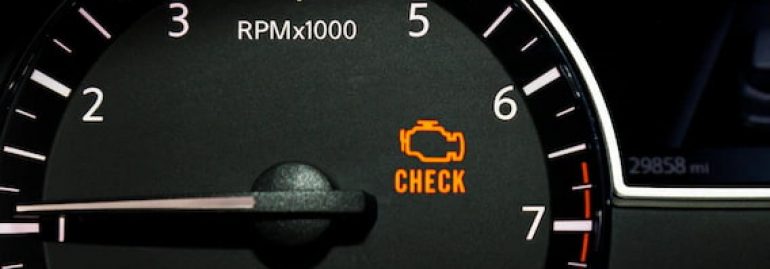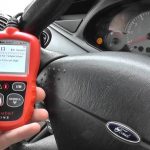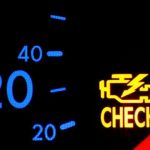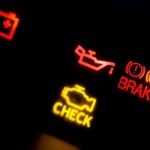Engine codes come in a wide variety of variations, some specific to one vehicle or manufacturer and others that apply universally across all vehicles.
If you are a fleet manager and own an OBD scanner or code reader, it is essential to understand what each code signifies. In this article, we’ll take you through an exhaustive list of engine codes and provide an in-depth comprehension of their meanings.
P codes
P codes are among the most critical OBD-II diagnostic trouble codes. They pertain to engine functions, transmissions and drivetrain systems and illuminate the check engine light when an issue arises.
Fortunately, most P codes are standardized and can be read by most OBD-II scanners. However, it’s essential to remember that each digit in the code indicates something unique about your vehicle’s issue.
For example, if you come across a P0xxx code, that indicates an issue in the fuel or air metering system. The initial two digits indicate what type of issue exists (numbers 1 and 2 pertain to fuel or air metering issues), followed by an index number identifying its specific fault index (a “1” indicates manufacturer-specific).
The code’s final two digits will indicate the cause of the problem. For instance, if you see P0171, that means your engine’s Bank 1 ratio is out of balance – leading to lean running due to too much fuel for too little air.
When this occurs, the powertrain control module will attempt to correct for the incorrect ratio by injecting more fuel into the mixture. Unfortunately, if that fuel is incompatible with your engine, your vehicle won’t run as smoothly and may eventually stop working altogether.
A P0xxx code may indicate an emission-related issue, such as evaporative emissions controls or idle control system troubles. Although these problems may not cause your check engine light to illuminate, they still cause your vehicle to burn excessive gas fumes.
B codes
Your car’s on-board diagnostic system (OBD-II) generates diagnostic trouble codes to alert drivers of any issues with the vehicle. These codes are stored in memory and can be read by a qualified technician using an OBD-II scan tool.
These codes typically begin with a letter, followed by an integer between zero and nine. The first number indicates whether the code is specific to a vehicle manufacturer or an SAE generic SAE code applicable to all OBD II systems. Ultimately, the last three digits provide information regarding which system or circuit is causing the problem.
P codes refer to powertrain-related functions that are shared among the engine, transmission and drivetrain accessories. They include EVAP (engine-to-air ratios), air-fuel ratios and emissions systems.
The next category of codes are B codes, which primarily appear in the passenger compartment and refer to features and functions like comfort, convenience, and safety. On the other hand, C codes reside outside the passenger compartment in the chassis of a vehicle and cover functions outside that compartment such as brakes or steering.
Another type of code found in vehicles are U codes. These refer to network and integration functions shared among numerous computer systems within a vehicle, usually due to module failures or communication problems.
The last digit of a code typically indicates the most critical function present. A “2” indicates fuel or air metering injection system issues, while an “3” signals ignition-related issues. A “4” indicates auxiliary emissions control issues, while a “5” deals with vehicle speed controls and idle control systems. Finally, a “6” signifies computer output circuit issues while a “7” pinpoints transmission-related faults.
C codes
When an OBD-II scanner is connected to a vehicle, it displays five digit Diagnostic Trouble Code (DTC). Each DTC letter and number indicates an issue within the vehicle; these may include letters for powertrain (“P”), chassis (“C”) or body (“B”) systems.
P codes indicate issues with the engine, transmission, fuel system and associated accessories. C and B codes provide more insight into mechanical systems outside the passenger compartment like steering, suspension and braking.
An OBD-II technician can decipher the code by breaking it into sections. The first character always represents a letter; the second digit ranges from 0 to 9; and finally the third and fourth characters consist of pairs of numbers between 0 and 99. Lastly, two last digits serve as “specific fault indexes,” which identify which subsystem is malfunctioning.
Code P0128 indicates the engine coolant temperature is below its thermostat’s regulating temperature. This code could be caused by several issues, such as an issue with the oxygen sensor in your engine, a leaky coolant line or an overheating engine.
A code can also be set off by a misfire or other ignition-related problem, such as an engine shutoff. These codes keep track of specific parts in the car’s engine or fuel system so technicians can easily locate and replace them when required.
Codes with a zero as the second digit are SAE-standard codes that apply to all vehicles, while ones with a 1 are manufacturer-specific. While some codes can be deciphered by non-technical individuals, others require expert diagnosis by an experienced mechanic for proper diagnosis.
U codes
Diagnostic trouble code (DTC) are composed of five characters, beginning with a letter and ending in a number. The initial character indicates whether the DTC is generic or manufacturer specific, while the remaining three indicate which system has been affected.
A P code, for instance, is a powertrain code and covers engine and transmission functions. A B code pertains to body systems like HVAC or airbags while C codes pertain to chassis operations like steering and suspension.
When a customer presents with an OBD-II code, you need to know its location within the engine codes comprehensive list in order to accurately diagnose the cause and make an accurate diagnosis. This is where a diagnostic tool can come in handy.
OBD-II codes come in four distinct varieties, each with its own set of numbers. The most frequent are P codes which indicate powertrain issues such as engine, transmission and drivetrain accessories.
The three other categories include B codes, C codes and U codes. While B and C codes relate more to interior of vehicles, U codes pertain to network communications. While these may not lead directly to sales opportunities, they can help pinpoint the cause of an issue.
The initial character in a trouble code indicates the general area of the car affected. The next character indicates whether it’s generic, meaning it affects all OBD-II equipped vehicles, or manufacturer specific, meaning specific to one make and model only. Finally, the last character identifies the specific problem that caused this error.
V codes
The engine codes complete list is an invaluable source for diagnostic trouble codes (DTCs) related to a car’s OBD-II systems. It includes codes for the powertrain system, network and integration (U), body and chassis systems, as well as more. Each code consists of a numerical letter followed by four numbers which identify specific components or systems.
Although some codes are specific to a car manufacturer or OBD-II system, many are generic and can apply to any type of vehicle. Examples include P-codes for the powertrain (engine), and U-codes for auxiliary emissions controls and body/chassis components.
V codes are supplemental classifications of ICD-9-CM that identify circumstances for encounters that are not directly related to disease or injury. They also serve to report problems or factors that could potentially impact current or future care. When assigned correctly, V codes can help avoid medical necessity denials and coding errors.
V codes that indicate a child’s social or environmental context as part of treatment or diagnosis are particularly useful. These codes help clinicians emphasize how much mental health problems stem from environments at home, school or in the community. Coding guidelines for these conditions have been included in the ICD-9-CM Official Guidelines for Coding and Reporting; you can find an extensive table listing all V codes along with their associated sequencing rules in the ICD-9-CM code book. Furthermore, you may review its specific coding instructions when reporting these codes in outpatient cases.







This was a very useful breakdown of the different diagnostic trouble codes vehicle owners and mechanics may encounter. I appreciate how the article categorized codes into groups like P, B, C, and U codes and explained what each indicates. As a car owner, having a comprehensive list of engine codes and their meanings is crucial so I know what types of issues to look out for based on the specific code reported. Going through real examples for each code category really helped illustrate how professionals decode trouble codes. This guide will be a great resource as I learn to understand my own vehicle’s diagnostic output. Thanks for sharing such an informative engine codes complete list.
2003 Chevrolet Suburban info read out code “RFA 2 BATTERY LOW”
What does this particular code mean?
Is it referring to my key fob?
I only have (1) key fob, so I’m assuming that it’s telling me that I have the original key fob #2 and key fob #1 was never given to me by the past owner, so….. please verify my guess as to the definition of my vehicle dashboard information readout that started showing me this message (RFA 2 BATTERY LOW)in the past 10 days!??!
Thank you for any assistance with this issue, it’s greatly appreciated…..
I have a 2016 Ford Escape and get an engine light with a code of P144A. I can’t find an answer to what that is. Can you help me identify the problem and tell me how long can drive it so I can get to a dealer? And what should I do. Thanks
So after reading all of this what would p26CB mean?